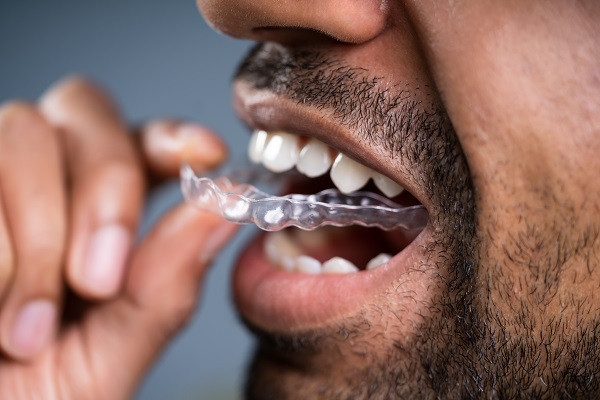 Orthodontics can be used to treat a variety of teeth alignment issues, like a crossbite or crooked teeth. The alignment of a person’s teeth plays an important role when it comes to their oral and overall health. A person has a bad bite when some or all of their teeth do not come together as they should when the mouth is closed.
Orthodontics can be used to treat a variety of teeth alignment issues, like a crossbite or crooked teeth. The alignment of a person’s teeth plays an important role when it comes to their oral and overall health. A person has a bad bite when some or all of their teeth do not come together as they should when the mouth is closed.
This often leads to a range of problems, from not being able to properly chew food to ruining the way that the person’s smile looks. Fortunately, orthodontics provides dental professionals with various options when it comes to correcting problems with their patients’ teeth alignment.
Common teeth alignment issues that orthodontics can fix
Dealing with poorly aligned teeth? Here are common teeth alignment issues that orthodontic devices like braces can correct.
1. Crossbite
A person is said to have a crossbite when their upper set of teeth sits on the inside of the lower set when their mouth is closed. The issue might only affect a tooth or an entire set of teeth. When left untreated, a crossbite can lead to other problems, such as uneven jaw development, worn-down teeth enamel, and unbalanced jaw movement.
A patient has a subsequent crossbite when their upper teeth at the back sit inside the bottom teeth. A frontal crossbite occurs when the top teeth sit behind the bottom teeth.
The severity of a patient’s condition often determines how an orthodontist approaches treating the patient's crossbite. Clear aligners can be used if the patient’s issue is not caused by their jaw being in the wrong position, while braces can be used in all cases.
2. Underbite
An underbite occurs when the lower set of teeth protrude past the upper set. It creates a “bulldog” type of look, with the patient appearing to frown whenever their face is in a neutral position. The condition puts stress on a person’s teeth and often leads to teeth wearing down or becoming damaged. The condition also weakens the temporomandibular joints (TMJ), increasing the risk of TMJ-related issues developing.
Braces are required to treat severe underbites because there might be a need to move the position of the patient’s jaw. Minor cases can be treated with clear aligners.
3. Open bite
A frontal open bite occurs when the upper and lower jaws do not extend as far out as they should. The condition can be the result of mouth breathing, tongue pushing, or extreme thumb sucking. A posterior open bite occurs when only the back teeth fail to extend as they should.
An open bite often leads to tongue thrusts, speech issues, and difficulty swallowing. Minor cases can be treated with clear aligners, while severe cases require braces and other appliances that can move the patient’s jaw.
Get straighter teeth
Dealing with poorly aligned teeth? Call or stop by our Oak Brook clinic to learn more about how our orthodontist can fix a range of orthodontic issues.
Request an appointment or call Panacea Orthodontics at 630-828-5080 for an appointment in our Oak Brook office.
Related Posts
Understanding how clear aligners work is the first thing someone needs to do when considering this popular teeth straightening option. Because there are a few different straightening options to choose from due to updated dental technologies, those who are need of straightening services have a few choices. Clear aligners are one of the popular options…
Orthodontics is a field of dentistry that improves the function and appearance of the teeth and/or jaws. In most cases, orthodontics uses gentle, constant pressure to reposition the teeth and the structures that support said teeth.If you are thinking about improving your smile with orthodontic treatment, keep reading. This guide is an overview of the…
A modern type of orthodontic appliance, clear aligners apply gentle pressure to the teeth to create a straighter, better-aligned smile. These aligners are considered by most to be more aesthetically pleasing than traditional braces and can be more hygienic as well. Although they are relatively simple to use, patients often have questions about what to…
